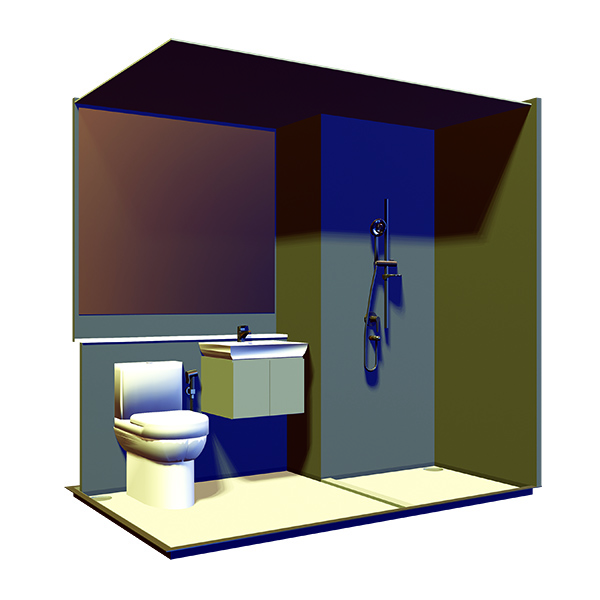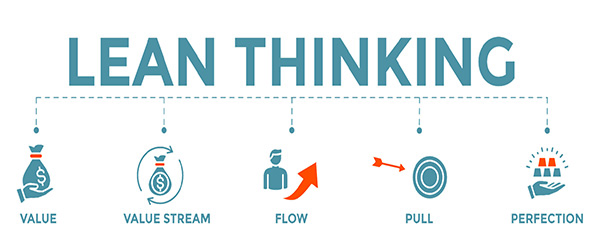A broad review of the basic principles and benefits of implementing a Lean program.
I’ve written a lot of columns for this magazine about the nuts and bolts of applying Lean to your offsite factory. However, this month’s column takes a different approach. Here, I zoom out to take a broad look at the basic principles of Lean and discuss how they all fit together to help you improve the performance of your factory.
I think we can all agree that the future of construction is offsite. However, to truly harness the benefits of offsite construction, it’s essential to apply Lean principles. Lean, originating from the Toyota Production System, is a set of principles aimed at eliminating waste and maximizing value in the offsite factory.
Managers who want these benefits should follow these five basic principles:
1. Identify the customer value
In offsite construction, the concept of value is centered on what the end customer truly desires and is willing to pay for. It starts with a clear understanding of the customer’s needs and preferences. For example, imagine a customer with an unmet need relative to completing her project within a set timeframe, while also meeting all local building codes. In this case, the value of your solution is partly defined by your ability to meet this need for the customer.
Identifying value is not just a one-time process. Instead, it’s an ongoing dialogue between the manufacturer and the customer. It requires attention to customer feedback, as well as a commitment on the manufacturer’s part to adapt to evolving customer needs.
2. Map the value stream
Mapping the value stream in an offsite construction factory involves analyzing the entire production process from design to delivery. This comprehensive overview helps identify all the steps and resources involved, from the initial design phase to the final delivery of the modular units.

For instance, consider the construction of modular bathroom units. The value stream map will include the design of the bathroom, the procurement of materials, the fabrication process, as well as quality control and shipping. Each of these steps contributes to the final product, and understanding how they interconnect is vital for improving efficiency.
3. Create flow
Creating flow in offsite construction is all about ensuring a smooth and continuous process. It means arranging the production line so that work flows seamlessly from one stage to the next. This requires meticulous planning and organization to minimize interruptions and delays.
Continuing with the example of the modular bathroom unit, once the design is finalized and materials are procured, the assembly line should be structured to minimize interruptions. Every unit should move through the process efficiently, with a well-designed workflow and with minimal handling.
4. Establish a pull system
Establishing a pull system in offsite construction means responding to customer demand. Instead of producing units based on forecasts or assumptions, production is initiated only when there’s a clear customer demand (i.e., an order). Likewise, each step in the process is initiated by “demand” from the next step behind it. This eliminates the problem of overproduction and reduces excess inventory, which can be a significant source of waste in manufacturing.
In our bathroom example, units are only manufactured when the factory receives an order for them. This not only reduces inventory costs, but also ensures that production resources are focused on what the customer truly needs.
5. Continue to seek perfection
The pursuit of perfection, in the context of Lean principles, is a journey that never ends. (That’s why it’s called “continuous improvement.”) The manufacturer must commit to striving for the continual elimination of waste and the constant improvement of all processes. A crucial part of this is the regular review and analysis of each phase of production.
For instance, if there’s a recurring issue with bathroom unit plumbing, it’s essential to identify the root cause by means of a Kaizen session (a meeting in which process workers engage in various exercises to identify the root causes of process issues) and to implement corrective measures to prevent the problem from happening again. This could involve improving the design of the bathroom and/or the plumbing runs, enhancing quality control processes, or providing additional training to the workforce.

Benefits of Applying Lean in Offsite Construction
A commitment to Lean principles in your offsite factory carries numerous benefits, including the following:
1. Reduced waste. Following Lean principles helps everyone on the team identify and eliminate various forms of waste. It’s not just material waste, but also includes time wasters such as unnecessary movement, waiting and rework. This leads to significant cost savings and increased operational efficiency.
2. Improved quality. By focusing on value and continuous improvement, Lean principles result in higher-quality products. In offsite construction, the end result is fewer defects. This leads to a more satisfied customer, and a reduced need for costly repairs, callbacks and warranty claims.
3. Shorter lead times. The creation of flow and the establishment of pull mechanisms will reduce lead times, resulting in speedier delivery to the customer (one of offsite’s superpowers). Speed is of course a significant competitive advantage in the construction industry, where project timelines are critical.
4. Cost savings. Eliminating waste, optimizing processes and reducing defects all contribute to cost savings. Lean offsite construction companies can offer competitive prices while maintaining healthy profit margins, making them more appealing to customers.
Offsite construction is not just about building structures; it’s about transforming the construction industry. It offers the promise of more efficient, more cost-effective and higher-quality construction projects. However, the application of Lean principles is essential to fully unlocking these benefits.
By identifying customer value, mapping the value stream, creating flow, establishing pull and seeking perfection, offsite construction factories can deliver high-quality products efficiently and economically.
Embracing Lean principles in this context is not just about improving operations; it’s about building better buildings and a better future for customers and the construction industry as a whole. This transformative approach aligns with the evolving needs of both the industry and the modern world, making offsite construction a cornerstone of our industry’s future.
Daniel Small is a Denver, Colo.-based management consultant to the offsite construction industry. He specializes in Lean Construction and Manufacturing and Six Sigma methodologies. For assistance with improving your offsite manufacturing process, contact him at 719-321-1953 or [email protected]. Or visit www.LeanOffsite.com.


















[…] Offsite construction is changing the building world. It combines Lean Construction Practices to be more efficient and cost-effective. This approach reduces waste and makes work processes better. So, projects are not only cheaper but done faster than traditional ways23. […]